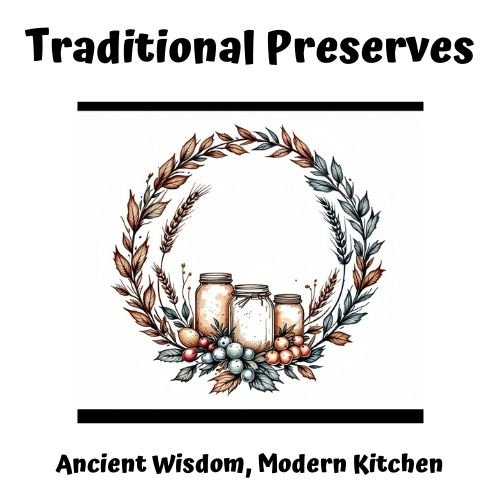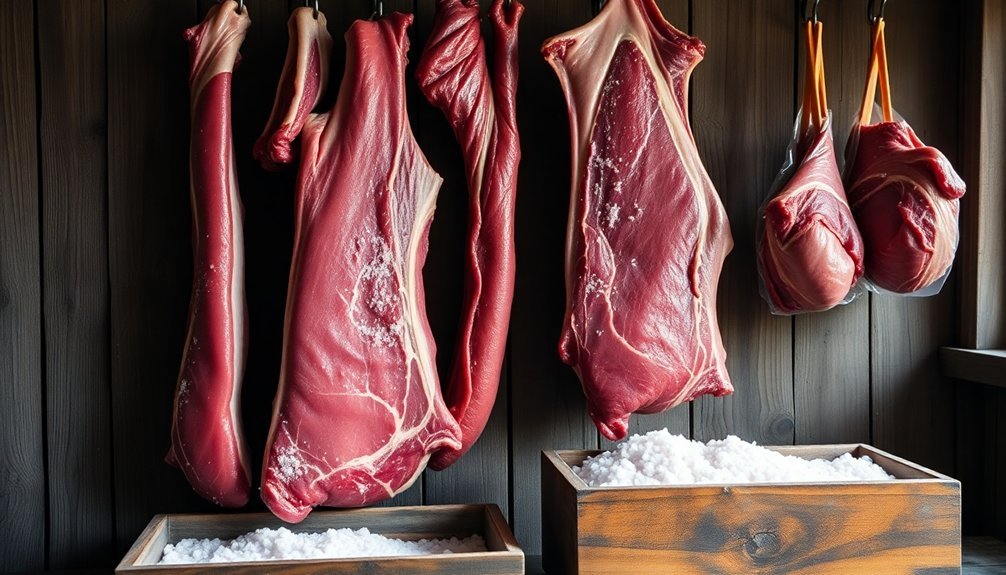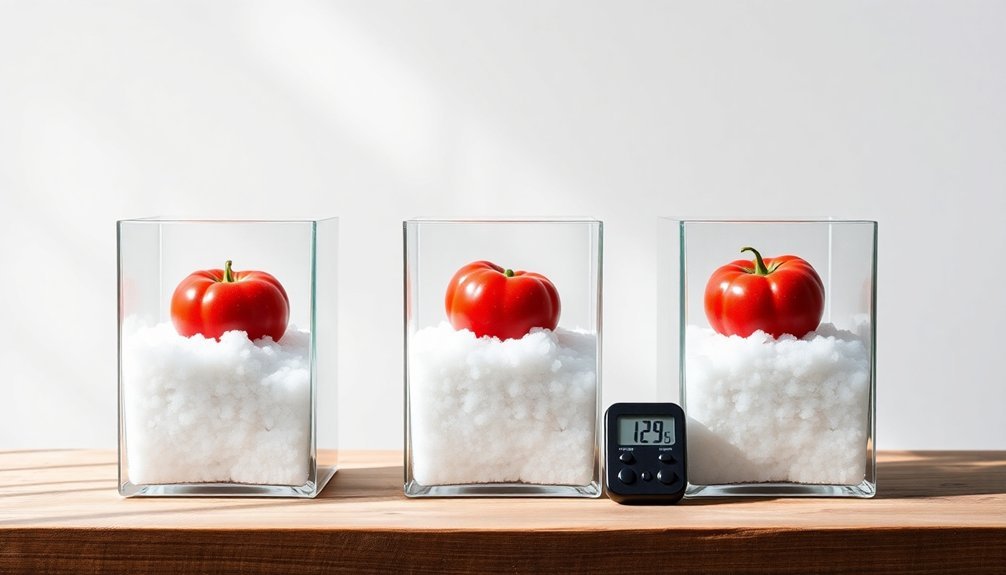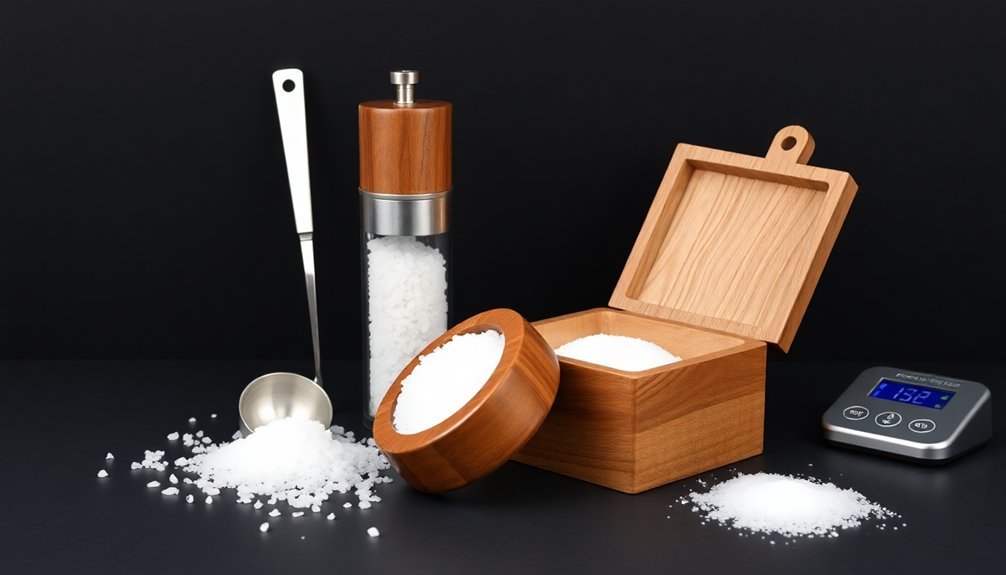You'll find ancient honey storage methods remarkably effective even today. The oldest evidence dates back 5,500 years, with civilizations using clay and ceramic vessels to maintain honey's low moisture content. You can replicate these time-tested techniques by choosing porous containers and sealing them with beeswax, much like the ancient Egyptians did. Their methods proved so effective that honey found in King Tutankhamun's tomb remained preserved for over 3,000 years. When you combine proper containers with traditional sealing practices, you'll tap into preservation wisdom that spans millennia of human innovation.
Storage Insights Through Ancient Times

The fascinating story of ancient honey storage begins with our earliest ancestors recognizing honey's remarkable self-preserving properties. You'll find evidence of this understanding in discoveries dating back 5,500 years, where ceramic vessels containing well-preserved honey were unearthed in Georgia alongside a noblewoman's tomb.
When you examine honey's natural composition, you'll understand why ancient civilizations relied on it so heavily. Its high sugar content and enzyme glucose oxidase work together to create an environment where bacteria simply can't thrive. Cave paintings in Valencia from 8,000 years ago show humans collecting honey, indicating early awareness of its preservation potential.
The honey's hydrophilic nature means you'll need to protect it from humidity, but when stored properly, it can last indefinitely.
You can trace these storage practices through various ancient cultures. The Greeks stored quince in honey-filled jars, while the Romans refined this technique by cooking the mixture.
In ancient Egypt, you'll find examples of honey being used to preserve both foods and burial offerings. Archaeological evidence, like the honey pots in King Tut's tomb and preserved berries in Bronze Age Georgian graves, shows how our ancestors mastered honey storage techniques that we still use today.
Clay Vessels and Sacred Containers
Archaeological discoveries reveal two distinct approaches to honey storage in ancient civilizations: practical clay vessels and ceremonial containers. You'll find compelling evidence of this in the 3,500-year-old terracotta vessels from the Nok culture in central Nigeria, where chemical analysis has identified preserved beeswax compounds within the pottery walls.
When you examine these vessels closely, you'll notice they served dual purposes: melting honeycombs to extract honey and storing the precious substance. About one-third of the pottery pieces contain complex lipids from beeswax, proving their widespread use in honey processing. Over 450 pottery fragments were analyzed to understand the extent of honey-related practices in this ancient civilization.
You'll see an even more elaborate approach to honey storage in ancient Egyptian civilization, where it wasn't just practical but sacred. In Tutankhamun's tomb, you'll find honey jars that remained unspoiled for millennia, demonstrating honey's remarkable preservation properties.
The Romans and Greeks advanced these storage methods, developing cylindrical clay hives that made honeycomb removal easier. Their containers weren't just functional; they reflected honey's vital role in medicine, cuisine, and religious ceremonies across these ancient societies.
Wild Honey Gathering Methods

Since ancient times, wild honey gathering has demanded specialized tools and extraordinary courage from indigenous communities worldwide.
You'll find evidence of these practices dating back 15,000 years in Spain and 6,000 years in rock paintings from Andra Pradesh, showing how deeply rooted these traditions are in human history.
When you're gathering wild honey, you'll need specific equipment that's stood the test of time. Traditional tools include sharp cutting knives, filter pans, and specially crafted ropes made from tree bark that can last up to seven years.
If you're collecting from cliffs, you'll require additional gear like smokers and bamboo spears. Night collection times are crucial, with most honey hunting occurring between 6:30 PM and 5:30 AM.
Here are three vital aspects of traditional honey gathering that remain relevant today:
- Community involvement – Multiple tribes like Kurumbas and Irulas work together, with brother-in-law partnerships being essential for safety.
- Spiritual preparation – Hunters undergo mental and physical purification before collection.
- Complete colony utilization – Gatherers collect not just honey, but also protein-rich brood, royal jelly, and pollen.
These time-honored methods continue to thrive in locations like the Nilgiri Biosphere Reserve and Zambia's "Honey Province," preserving ancient knowledge through generations.
Natural Materials for Preservation
You'll find that ancient civilizations relied heavily on clay and ceramic vessels to store their honey, as these materials naturally helped maintain honey's low moisture content.
Natural tree hollows served as inspiration for early storage methods, leading to specialized ceramic designs that mimicked these spaces' ability to protect honey from excess humidity.
Beeswax sealing methods provided an additional layer of preservation, with ancient beekeepers applying melted wax around container edges to create airtight seals that prevented moisture from compromising honey's natural preservative properties.
Clay and Ceramic Vessels
Clay and ceramic vessels played a pivotal role in ancient honey storage, with evidence dating back to the first millennium B.C. You'll find remarkable examples from the Nok culture of sub-Saharan Africa, where terracotta pots preserved honey for over 3,500 years.
Even in King Tut's tomb, archaeologists discovered honey stored in ceramic jars that remained edible after three millennia.
The success of these vessels in preserving honey relies on several key factors:
- The natural porosity of terracotta helps maintain ideal storage conditions by allowing minimal air exchange while keeping moisture levels low.
- The vessels' tight seals protect honey from external contaminants and prevent water absorption.
- The combination of honey's natural acidity and the cool, dry environment within the ceramic containers creates prime preservation conditions.
Chemical analysis of ancient pottery shards has revealed beeswax residues trapped within the terracotta pores, confirming these vessels' use in honey storage and processing.
Using gas chromatography, scientists have identified complex lipid compounds consistent with beeswax, providing concrete evidence of honey's significance in prehistoric societies, particularly in West African communities.
Natural Tree Hollows
Nature's most effective honey storage system can be found in tree hollows, where wild bees have perfected their preservation techniques over millions of years.
These natural structures provide ideal conditions with their tall, narrow spaces and small bottom entrances that help maintain vital humidity levels inside the hive.
You'll find that bees instinctively prepare these spaces by removing outer bark layers and smoothing the interior walls. They'll then seal everything with propolis, a natural glue made from tree resins, creating an environment that's perfect for building honeycombs and storing honey.
What makes tree hollows particularly effective is their natural climate control. They'll keep hot air trapped inside while protecting the colony from wind and extreme temperatures.
When you're looking at the south side of trees, you'll notice these hollows receive early morning sunlight, which is essential for the colony's health and the queen's egg-laying activities.
While modern hives weren't designed with these natural features in mind, you can replicate these conditions using hollow logs.
Beeswax Sealing Methods
Traditional beeswax sealing methods rely on a precise process of collecting, cleaning, and processing wax cappings from honeycomb frames.
You'll need to carefully cut the cappings using a hot knife during honey extraction, then store them in metal trays or freezer bags with minimal air exposure to prevent fermentation. The collected wax must be thoroughly cleaned in cool water to remove residual honey before melting.
For ancient storage vessels, you'll want to process your beeswax through multiple stages of purification.
Start by melting the cleaned wax in a double boiler or solar melter, then filter it through fine mesh stockings to remove impurities. Once filtered, you can remelt and strain again for maximum purity.
Three critical steps for creating effective beeswax seals:
- Filter the melted wax twice through stockings to guarantee no particles compromise the seal
- Allow the wax to cool slightly before application to prevent cracking
- Apply multiple thin layers rather than one thick layer for better adhesion
The resulting purified beeswax creates an airtight, moisture-resistant seal that's proven effective for millennia in preserving honey and other valuable commodities.
Fruit and Honey Combinations

You'll find that ancient civilizations mastered the art of combining fruit with honey to create lasting preserves, with Greeks and Romans leading the way in developing these techniques.
The process typically involved coating partially dried fruits in honey, taking advantage of honey's natural antimicrobial properties and low moisture content to prevent spoilage.
When you're storing fruit in honey, you'll need to maintain proper temperature conditions and use airtight containers, much like the ancients did, to guarantee successful preservation.
Traditional Preservation Techniques
Long before modern refrigeration, ancient civilizations discovered that honey's remarkable preservative properties could extend the life of fresh fruits. Ancient Roman texts, like Pliny's "The Natural History" and Apicius's culinary guide, describe detailed methods of preserving quinces by either boiling them in honey or combining them with defrutum, a reduced spice wine.
You'll find honey's preservative power comes from its unique properties:
- Its low water content and hydrogen peroxide production naturally fight bacterial growth.
- The high sugar concentration creates an environment where microorganisms can't thrive.
- It prevents fruit discoloration without requiring additional preservatives.
When you're ready to try these time-tested techniques, you can preserve fruits using two main methods. The first involves mixing one part honey with four to five parts sliced fruit before freezing.
Alternatively, you can create a preserving syrup by combining honey with boiling water. You'll need to guarantee proper sanitization and sealing of your containers to prevent mold growth.
These methods aren't just historical curiosities – they're still practical today, offering effective preservation while maintaining the fruit's natural flavors and nutritional value.
Sweet Storage Solutions
Building on these ancient preservation methods, specific fruit and honey combinations offer remarkable storage solutions that you can easily replicate at home.
You'll find that honey's natural sugars work through osmosis to draw water out of fruits, creating an environment where harmful microbes can't survive.
To create your own preserved fruits, you'll want to follow a simple ratio of 3:1 honey to fruit. Start by pureeing your chosen fruits, then mix them thoroughly with honey without adding any water.
You'll need to store the mixture in a clean, sealed mason jar to maintain its stability.
You can trace this preservation technique back to ancient Greeks and Romans, who perfected it with fruits like quince. They'd mix the fruit with honey, dry it, and pack it tightly in jars.
The Romans enhanced this method by cooking the mixture to achieve a firmer consistency.
Today, you can store your honey-preserved fruits at room temperature, though refrigeration will extend their shelf life for several weeks.
When you're selecting honey, consider its pH level to match your chosen fruit.
Once opened, you'll find these preserves last considerably longer when kept refrigerated and clean.
Burial Preservation Techniques
Ancient civilizations developed sophisticated methods for preserving their dead, with honey playing a central role in many burial practices. You'll find evidence of honey's preservative powers in historical accounts, from Herodotus's writings about Assyrian embalming to the legendary preservation of Alexander the Great in a honey-filled golden coffin.
Here's what made honey such an effective preservation agent:
- Its low moisture content and high sugar concentration naturally dehydrated microbes.
- Its acidic pH level (around 3.5) prevented bacterial growth.
- The hydrogen peroxide produced by bee enzymes acted as a natural antimicrobial agent.
You'll discover that honey wasn't the only natural preservative ancient cultures used. The Spanish applied cinnabar to bones at La Velilla about 5,000 years ago, while Egyptians relied heavily on natron salt for mummification.
These preservation techniques were typically reserved for society's elite due to their complexity and cost. When you examine archaeological evidence, such as the honey-preserved offerings found in Georgian Bronze Age graves, you'll understand how these ancient methods effectively protected bodies and sacred objects for thousands of years.
Religious and Cultural Storage Practices

The sacred rituals of ancient civilizations elevated honey's role beyond mere preservation to a divine status. You'll find that temples and religious institutions developed specialized storage methods to maintain honey's purity for ceremonial use.
In ancient Egypt, priests known as afty-priests were specifically tasked with managing honey storage for religious offerings.
When you examine temple records, you'll notice that different types of honey required distinct storage approaches. 'White honey,' reserved for royal and temple use, was stored in sealed containers using methods depicted in temple reliefs. The sealing process wasn't just practical – it held religious significance, ensuring the honey remained pure for offerings to gods like Min and for ceremonies such as the "Opening of the Mouth."
You'll discover that storage practices varied across cultures but shared common religious themes. In Jewish traditions, honey needed proper storage for Rosh Hashanah celebrations, while Hindu temples preserved honey as one of the five sacred elixirs.
These storage methods weren't just about keeping honey fresh – they were about maintaining its divine qualities for rituals, offerings, and ceremonial baking of honey loaves and cakes.
Frequently Asked Questions
How Did Ancient Civilizations Test Honey Quality Before Storage?
You'll find ancient civilizations tested honey quality through practical methods – they'd examine its taste, texture, color, and consistency. They'd rely on experienced beekeepers and traditional knowledge rather than chemical testing.
What Methods Were Used to Prevent Crystallization in Ancient Honey Storage?
You'll find ancient civilizations prevented honey crystallization by storing it in airtight ceramic containers, keeping it at stable room temperatures in dark places like tombs, and using dry utensils to minimize moisture exposure.
Did Ancient Societies Trade Different Types of Honey Across Regions?
Yes, you'll find ancient civilizations actively traded diverse honey varieties. You can trace Egyptian, Greek, Roman, and Mayan honey moving across trade routes, each valued for their unique flavors and medicinal properties.
How Long Could Honey Remain Edible Using Ancient Storage Methods?
You'll find that properly stored honey could last indefinitely in ancient times. When sealed in clay vessels and kept in cool, dry places, it remained edible for centuries, as proven by discoveries in Egyptian tombs.
What Tools Were Used to Transfer Honey Between Different Storage Containers?
You'd use simple tools like clay pots, woven baskets, and natural funnels made from reeds or hollow gourds. Pour spouts on ceramic vessels and wooden ladles helped transfer honey between containers efficiently.
In Summary
You've discovered that ancient honey storage methods weren't just practical – they were ingenious solutions that still work today. Whether you're using clay pots, combining honey with fruits, or following time-tested preservation techniques, these ancestral practices offer reliable ways to keep your honey fresh. By understanding these methods, you're not just storing honey; you're connecting with centuries of human wisdom and innovation.





Leave a Reply